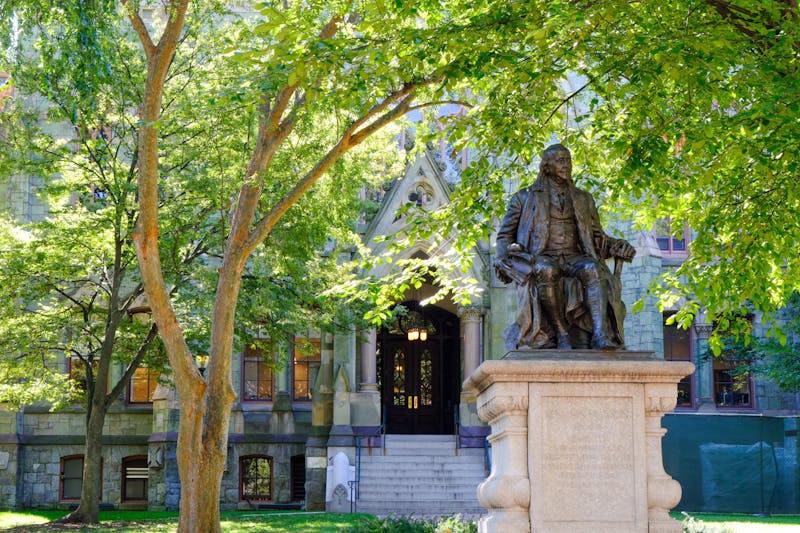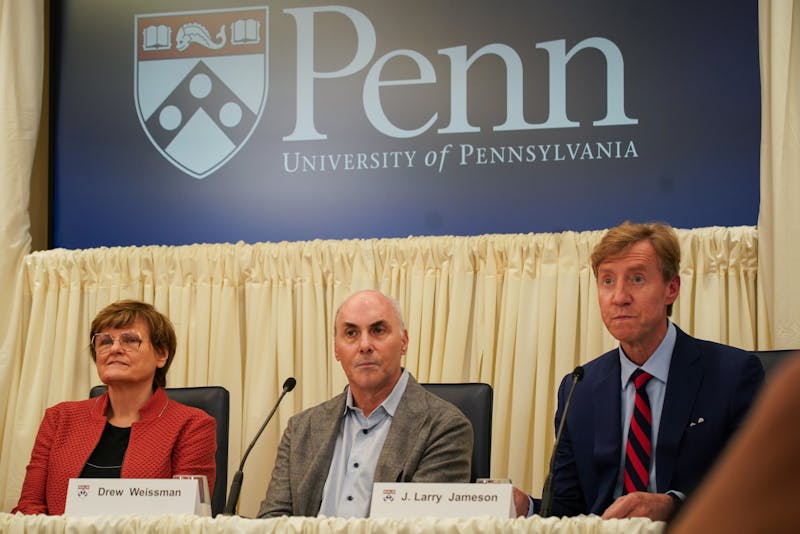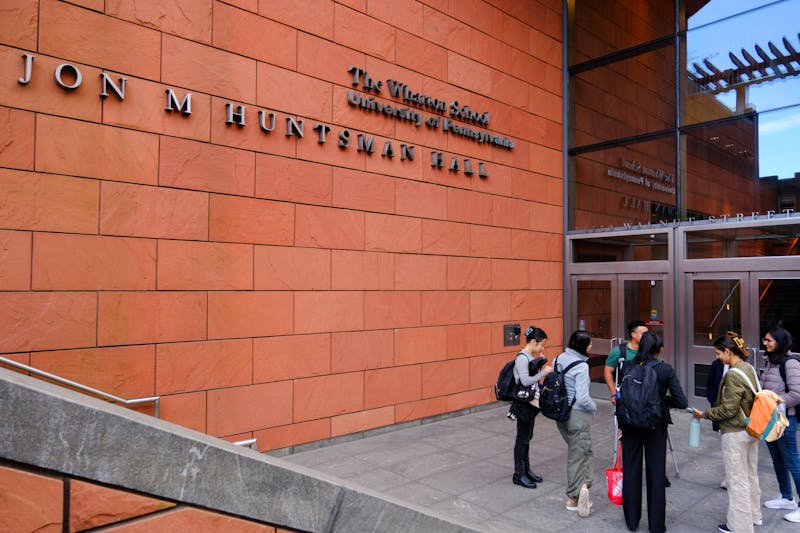
The reading room of Fisher Fine Arts library on Sept. 28, 2021.
Credit: Gundappa SahaThe Daily Pennsylvanian analyzed 1,000 of Penn’s most-cited researchers from across its 12 undergraduate and graduate schools.
The DP found that nearly 100 Penn-affiliated researchers had over 50,000 academic citations. The list includes previous and current professors, graduate students, and other researchers with a Penn affiliation on Google Scholar.
Penn's 1,000 most-cited researchers
Every researcher included in the analysis was cited at least 6,000 times, and the top 500 researchers each had more than 15,000 citations.
Metrics of research output can play a role in hiring and tenure decisions as well as university rankings, according to Stephen Pettigrew, the director of Data Sciences at the Penn Program on Opinion Research and Election Studies.
Psychology professor Martin Seligman — whose research focuses on Positive Psychology, resilience, learned helplessness, optimism and pessimism — topped the list with almost 300,000 citations. He has written over 350 scholarly publications and 30 books, and his research has contributed to a number of institutions, including the National Institutes of Health, National Science Foundation, and United States Department of Education.
“No one number is going to encapsulate how good a researcher is,” Pettigrew said. “But citation count can be a good proxy for the things we actually care about like the quality of someone’s research.”
Research output can be measured in a variety of ways. The first is the total number of academic citations, but a high citation count might come from one frequently cited paper or several papers that each consistently have a high number of citations.
As a result, scholarly output is often measured by a researcher’s h-index, which takes productivity and citation impact into account. The h-index correlates with various indicators of success, including the Nobel Prize, research fellowship acceptances, and positions at top universities. A more recently created alternative is the i10-index, which represents the number of papers an author has published that have been cited at least 10 times.
Virginia Lee, a professor at Perelman School of Medicine, had the highest value for both of these metrics. Her h-index of 227, meaning she has authored 227 papers with a minimum of 227 citations. She also has an i10-index of 910 — correlating to 910 papers with at least 10 citations.
Lee, who is the director of the Center for Neurodegenerative Disease Research, studies the role that different proteins play in age-related neurodegenerative disorders, including Alzheimer's and Parkinson's diseases. She has won a number of academic honors, including the Breakthrough Prize in Life Sciences, and was ranked the world's number two female scientist by Research.com.
Researchers associated with the Medical School made up a majority of the 1,000 most cited authors. The College of Arts and Sciences followed at 18%, and researchers from the Wharton School and the School of Engineering and Applied Science respectively made up 10% of the top 1,000.
Researchers affiliated with the Medical School made up 53% of the 1,000 most cited from Penn
Accounting for the size of each school, the DP found that approximately 40% of Wharton faculty fell in the top 1,000 most-cited Penn-affiliated researchers, followed by 35% of faculty from the College and 33% of the Engineering School faculty.
Wharton has the highest percentage of faculty who are among the 1,000 most-cited Penn-affiliated researchers
Among researchers affiliated with the College, those in the Physics and Astronomy department made up the largest percentage of the top 1,000, followed by those in Psychology and Chemistry. Researchers from the Management department made up the largest percentage of Wharton faculty in the top 1,000, followed by those in Marketing and Operations, Information and Decisions researchers.
Computer and Information Science led in the Engineering School, followed by Bioengineering and Electrical and Systems Engineering.
Across Penn's undergraduate schools, the Physics and Astronomy Department has the most highly cited researchers
“Different fields cite differently; they can have different numbers of listed authors and different average publications,” Political Science professor Matt Levendusky said. “Like any metric, citations can be useful, but you never want to rely on them too much and it's important to consider them in context.”
The data includes all researchers with Google Scholar profiles that either linked a Penn email to their account or mentioned Penn in their bio; some tenured or independently famous Penn professors do not create Google Scholar pages and may not be listed here.
The estimated size of each school was calculated using the number of faculty members listed, but researchers associated with that school may include staff not listed on the sites. The data was collected in December of 2023 using SerpApi.
The Daily Pennsylvanian is an independent, student-run newspaper. Please consider making a donation to support the coverage that shapes the University. Your generosity ensures a future of strong journalism at Penn.
Donate












